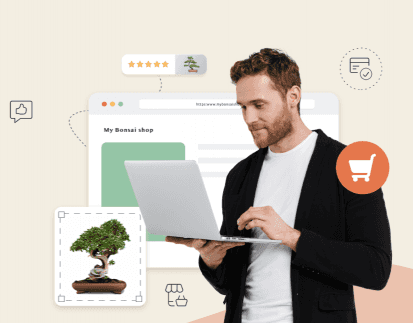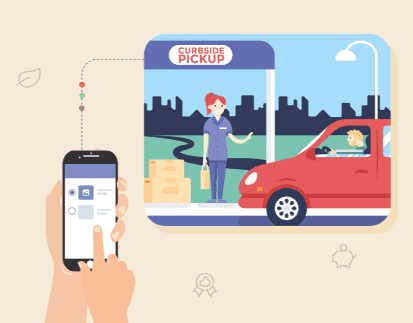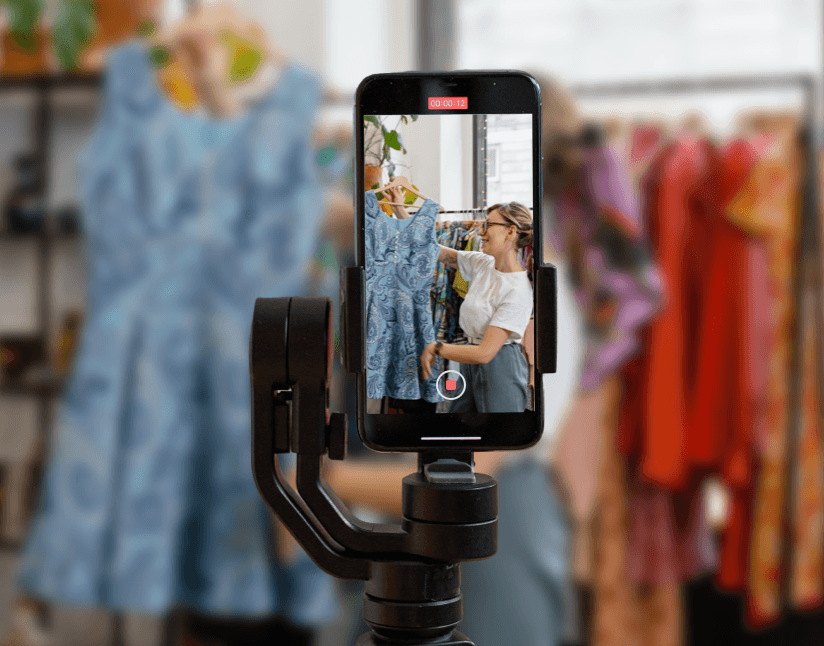

Pohan Lin
Pohan Lin is the Senior Web Marketing and Localizations Manager at Databricks, a global Data and AI provider.
There is no doubt that eCommerce is a vast industry and continues to grow. In fact, the global eCommerce market is expected to reach $4.11 trillion in 2023 and rise further to $6.35 trillion by 2027.
As a result of increasing competition, eCommerce businesses are constantly seeking ways to create exciting, customer-focused experiences while increasing revenue.
From restaurants that develop a food delivery app to capture a wider audience to established online boutiques that use unique influencers to show off their distinctive style. Omnichannel experiences and increased personalization are just two tactics used by organizations in recent years.
Livestream shopping is another emerging strategy that eCommerce businesses use to stand out and increase revenue. With the ability to interact directly with customers and provide an immersive shopping experience, live commerce is an excellent addition to any eCommerce business's strategy.
China was the pioneer in this area, with its live commerce market growing from $3 billion in 2017 to $171 billion in 2020. While the US is playing catch-up, the live-streaming market is still forecast to be worth $68 billion by 2026.
Although those numbers may seem relatively small in the context of the total global market, they still represent a significant percentage of the eCommerce sector.
But how does live commerce work? How can it benefit your brand, and how can you use it to upgrade customers’ online shopping experience? Let’s dive in.
What is Live Commerce?

The concept of live commerce isn’t exactly new. In fact, you could say that live commerce has been around since the 1980s in the form of television shopping channels such as QVC.
Now, the concept is evolving thanks to the rise of eCommerce and modern technology.
Put simply, live commerce is the process of selling your products directly to customers via live video while allowing customers to interact directly via various channels. This can help improve your customer journey map and boost results.
To provide an immersive experience and smooth shopping journey, live commerce typically features various tools, including live chat, a live video shopping tool, and integrated shopping carts. A customer can sit in the comfort of their favorite chair and watch product demonstrations, talk to your staff, and make purchasing decisions in real time.
What are the Benefits of Live Commerce?
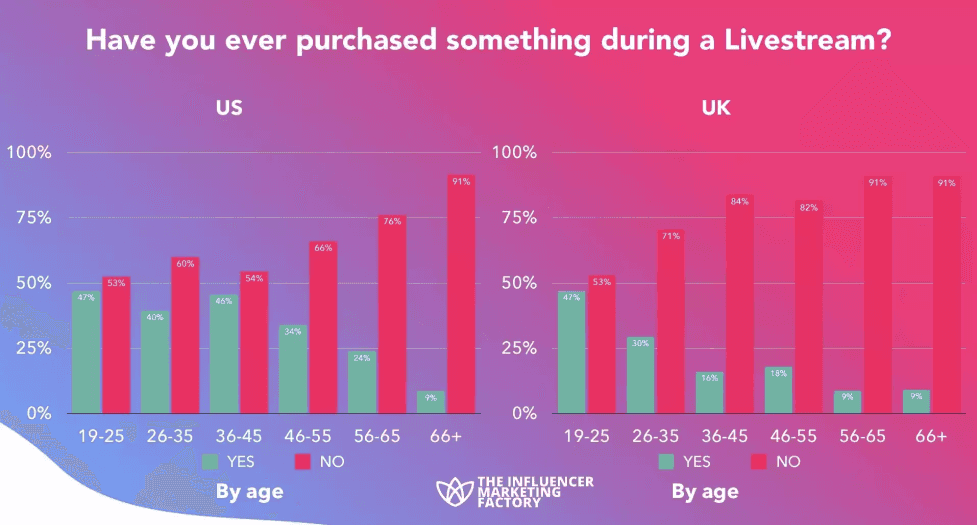
While live commerce has a lot of potential in the eCommerce sector, it’s essential to understand the benefits to your company. After all, there’s no point implementing a trend if your target audience won’t engage with it. Other than potentially increasing your profits by offering an alternative revenue stream, let’s look at what other benefits live commerce can bring to your business.
- Instant connections: Your customers are seeing products live, some of which they may not even have considered buying before now. This live link between you and your customers can mean accelerated sales figures.
- Impulse buying: As mentioned, people may buy products they didn’t previously consider when they see it being used live. Customers may feel excited to discover new products. If you couple this with creating a sense of urgency through limited-time offers, it can result in higher levels of impulse buying.
- Increased engagement: Video/live streaming engages people better than other types of content. People are more likely to share links and videos with friends and family if they feel the content is useful and the products offer value. You will probably already be measuring advertising effectiveness, and now you can include live stream effectiveness in your analyses.
- Better brand awareness: There is more of a ‘connection’ when customers watch live commerce as they can see the faces behind the brands. You can also use influencers in your live commerce model. Both these factors make your brand more recognizable and have greater reach.
- Improved shopping experience: While not quite a genuine in-store experience, live commerce is as close as you can get with a digital store. Customers can view products, listen to the descriptions and benefits, and even ask questions. This vastly improves their overall shopping experience.
Live Commerce Strategies you Should Consider

It’s one thing to understand the benefits of live commerce. But how do you shift from your current tactics to a model that includes live commerce?
1. Omnichannel streaming
You may already be using an omnichannel approach in your eCommerce business, so expanding that to include live streaming can be a relatively simple process. Combining streaming with existing omnichannel marketing can provide your customers with a seamless purchasing process.
The idea of omnichannel marketing is to provide people with an integrated experience no matter their preferred channel or device. Live streaming easily fits with your existing omnichannel strategy.
Some ways to implement this effectively include:
- Ensuring any live stream video is shareable by viewers.
- Making your live stream available on all channels, including YouTube, social media, and your website.
- Allowing for comments and opening chat channels to make the experience interactive.
- Making any transition from viewing to buying as simple as possible by including ‘buy now’ buttons or contact forms, so customers can purchase or make queries easily.
- Editing extracts of live streams to market your streaming service and give people an idea of how live commerce works and how it can benefit them.
2. Q&A sessions
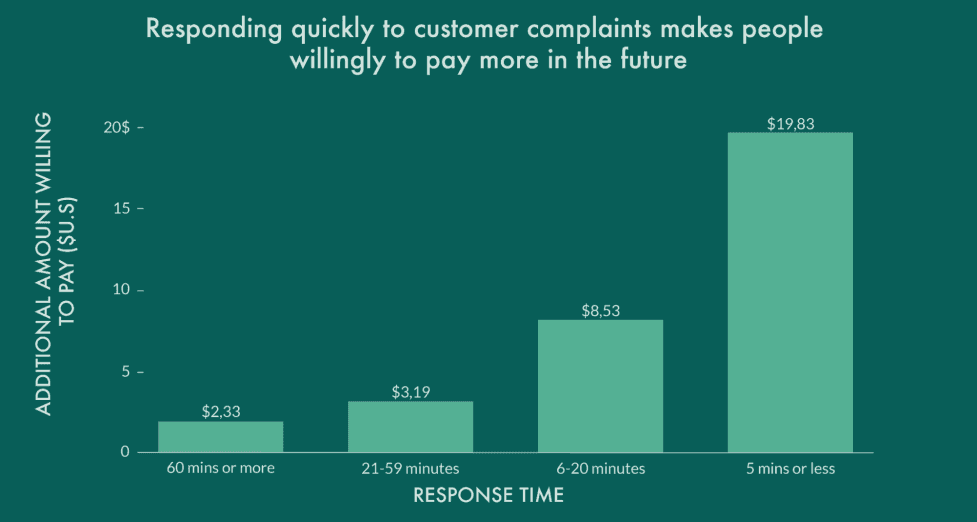
Q&A sessions are an excellent way to ease yourself into a live commerce model. Today, the majority of customers expect an immediate response to sales or marketing queries. That makes live Q&A sessions the ideal way to answer questions customers may have while you are demonstrating products.
These sessions can be particularly useful when it comes to more complicated or educational products, as these purchases usually require greater consideration. For example, say you’re promoting your data engineering certification courses. Here a Q&A session would be invaluable to your customers as it gives them the opportunity to understand the details of the course, why it’s worth investing their time in the course, and how it can be valuable for their future.
You can use live chat so that viewers can ask questions immediately and your staff can answer them in real-time. Giving quick and accurate answers can be the deciding factor when it comes to making a final purchasing decision. With that in mind, it’s essential that the team conducting live commerce sessions are familiar with the brand, products, and services.
You can also tailor different Q&A subjects for your sessions and save and edit these to use in future marketing material. Some subject ideas to get you started include:
- ‘About Us’ insights into the company and brand
- Seasonal products and styles
- Gift ideas – these could be seasonal or for general occasions such as for birthdays
- Highlighted products and special offers – this can be an excellent way of promoting new products and overstocked ones.
- Explaining services. As with the example above, these Q&A sessions can be used to explain what to expect or what benefits are.
- Industry insights and innovations
3. Consider using influencers
Never underestimate the power of influencers. The influencer market is estimated to grow to some $21.1 billion in 2023, so should not be ignored.
You may already be using influencers as one of your social media marketing tools so why not expand their role to include live streaming? Using influencers in your videos is an innovative way to increase your reach and boost sales.
The one difference you can include with influencers is to broadcast prerecorded videos as well as live streams. All the other rules will still apply; customers will have easy ways to make a purchase and your live chat team will be ready to answer questions. Depending on how many followers an influencer has, you could find yourself onboarding a significant number of new customers.
4. Think small as well as big
When people ask ‘what is live commerce’, the answer usually includes the idea of streaming to many people at once. However, you can also include a micro model in your live commerce strategy. Offering one-to-one video calls to targeted customers is a beneficial tactic when it comes to higher-value purchases and can help you build strong client relationships.
The micro model is slightly different to live streaming to a wide audience, though the basics remain the same. That said, there are a few best practices that can apply if you decide to offer one-to-one video calls:
- Offer the choice of audio only or full video calls so the customer can choose their preferred method.
- Use targeting features to identify potential buyers at the right stage in their journey.
- Consider the long-term benefits: Your video call may not lead to a purchase there and then, but it can build greater customer value and increase the chances of them buying later.
- Make use of smart tools such as video appointment scheduling software from TIMIFY, which streamlines the booking process, helps you manage calls, and offers automated communications such as reminders and post-event satisfaction surveys.
5. Make your live chat an active discussion
One of the beauties of live commerce is that you can have live discussions with customers, and you can allow all audience members to either participate or merely observe. However, keep in mind that without active participation, customers may as well watch a series of pre-recorded videos with no ability to ask pertinent questions in real time.
With an active discussion, you are allowing a higher level of customer engagement and increasing the connection between you and your customers. There are several benefits that can come from having active discussions, including:
- The ability to click on links to products, special offers, and other resources such as blogs or ‘how to’ videos.
- See any FAQs that may be relevant to the customer.
- Adding reviews to your live stream so that customers can see what other people have thought of the product or service.
The Takeaway

Any eCommerce business owner will know there are various concepts and trends to wrap your head around, from what is live commerce to what is a reseller certificate. Understanding which trends are relevant to your business and how to implement them to benefit your customers is crucial if you want to stand out from competitors.
Live commerce looks like one trend that’s set to stay, and it could help you reach new customers, increase sales, and provide a more engaged and streamlined customer experience.

About the author
Pohan Lin
Pohan Lin is the Senior Web Marketing and Localizations Manager at Databricks, a global Data and AI provider connecting the features of data warehouses and data lakes to create lakehouse architecture along with Databricks HDFS architecture. With over 18 years of experience in web marketing, online SaaS business, and ecommerce growth. Pohan is passionate about innovation and is dedicated to communicating the significant impact data has in marketing. Pohan Lin also published articles for domains such as Landbot and PPC Hero.
Related articles
